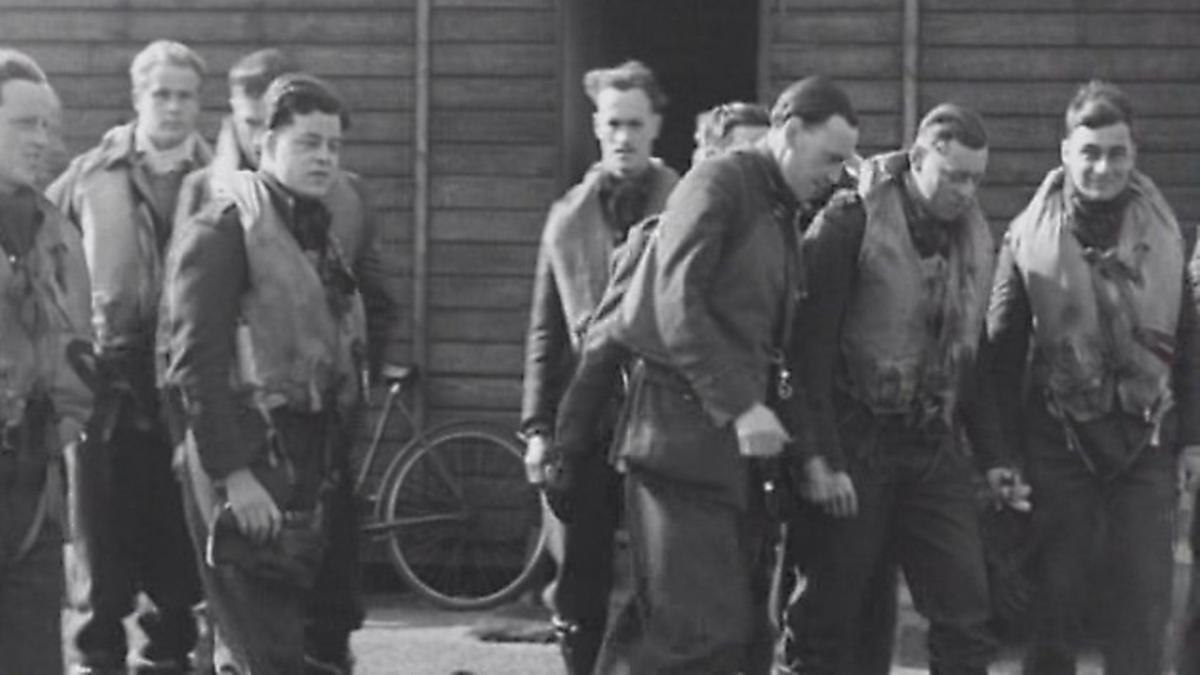The daring and heroic exploits of our pilots during the Battle of Britain have become ingrained in history, with the men’s bravery laid bare in Winston Churchill’s famous speech thanking the “Few”.

And nowhere were the pilots more prized than in Hornchurch, where they played a vital role in the months-long struggle.
With the 75th anniversary falling today, Britain’s victory is now back in the spotlight.
Historian and author Richard Smith, 58, of Theydon Gardens, Rainham, said: “The Germans had taken over France and the only thing stopping them invading Britain was the Channel, where we retreated from Dunkirk.
“We brought back about 330,000 soldiers and left most of our big armaments – the only people left to defend us were the RAF.”

The battle began on July 10 1940 and Hornchurch was a key player.
Many pilots at RAF Hornchurch, known as Sutton’s Farm during the Great War, made their mark, including Eric Lock, thought to have destroyed the most enemy aircraft – 21.
The 603 (City of Edinburgh) Squadron, based at the aerodrome at the time, also destroyed the most planes of any squadron – 57.
The Luftwaffe’s attacks began around the coast, but then moved to the aerodromes themselves.

Hornchurch was targeted three times on August 31 and again the next day, killing a “handful”.
Some of the pilots preparing to take flight were injured.
New Zealander Alan Deere’s Spitfire crashed upside down and he became trapped in the cockpit.
Eric Edsall, whose aircraft suffered a torn wing, jumped out and managed to “drag him out, with part of his scalp torn away”.
A third pilot, Jack Davis, was blown over the River Ingrebourne and returned an hour later.
The battle continued until October, but September 15 – Battle of Britain Day – saw the RAF defeat the Luftwaffe’s largest attack against London, after commander Hermann Göring underestimated the force’s numbers.
If he had continued bombing aerodromes, the RAF would have been “wiped out”, said Richard.
The author added: “It was a very important time. If it wasn’t for these guys, we would probably be speaking German now.”
His latest book, RAF Biggin Hill, is available from Swan Books, in Corbets Tey Road, Upminster.
---------------------------------
Eric Lock
- Eric Lock is one of Hornchurch’s most famous pilots
- Born on April 19 1919 near Shrewsbury, Eric was fascinated with aviation as a child
- He joined the RAF Volunteer Reserve in February 1939, aged 18, and was awarded his pilot’s certificate in May, with the rank of sergeant pilot
- Eric became known as Lockie or “Sawn Off” – because of his 5ft 6ins stature
- He claimed his first enemy aircraft on August 15, while serving from Catterick with 41 Squadron. After returning with them to Hornchurch on September 3, his skills really shone through
- As well as the confirmed 21 aircraft Eric destroyed during the Battle of Britain, it is thought he probably destroyed seven more and damaged another
- He was awarded the Distinguished Flying Cross
- Eric, 21, was attacking targets of opportunity in France on August 3 1941 when he disappeared after attacking a column of German troops
- It is thought he was killed or wounded on the journey home, by enemy ground fire, and his Spitfire crashed into the channel
Information from Hornchurch Streets of Heroes by Richard Smith





Comments: Our rules
We want our comments to be a lively and valuable part of our community - a place where readers can debate and engage with the most important local issues. The ability to comment on our stories is a privilege, not a right, however, and that privilege may be withdrawn if it is abused or misused.
Please report any comments that break our rules.
Read the rules here